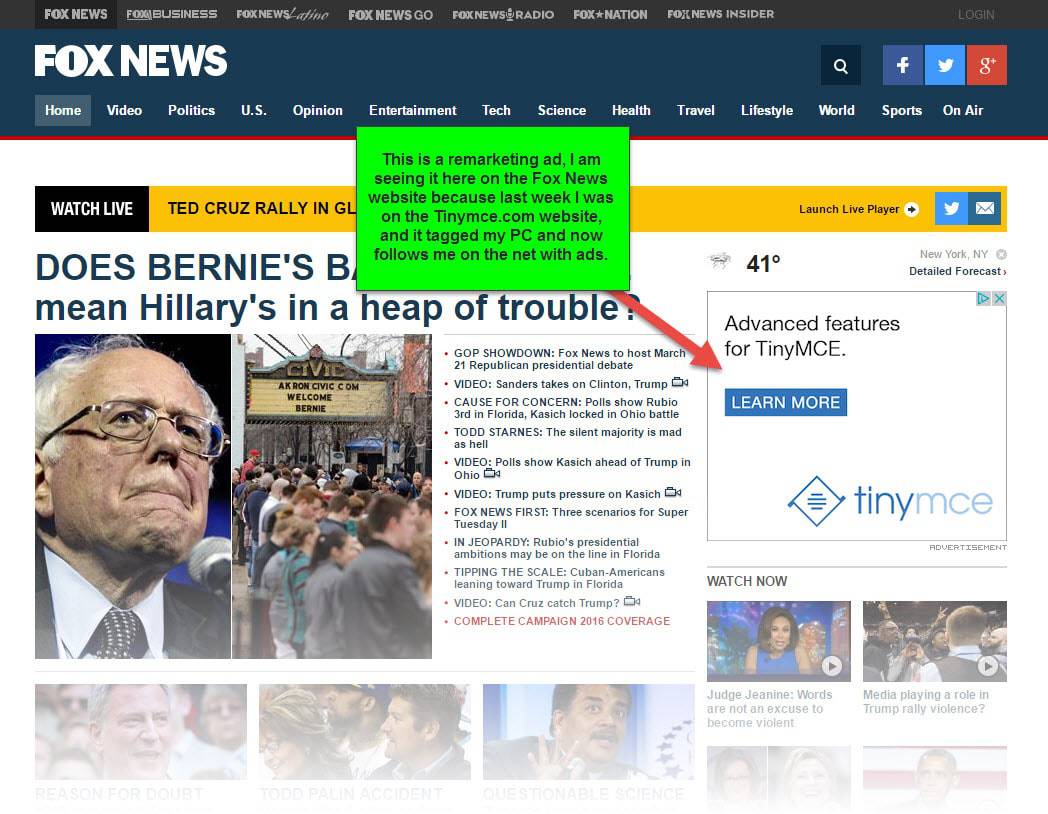What Is Remarketing?
Remarketing is a way to advertise with display ads in Google search results. There are about a dozen different sized remarketing ads that you see every day, and are following you as you browse the net, purposely appearing on websites you visit, such as Youtube, Forbes.com, CNN, ABC and most informational blogs make their money off Google display advertisements.
Below Is An Example Of A Remarketing Ad
How Remarketing Ads Work
In short: If you visit www.tinymce.com, their website will tag your PC with a ‘cookie’ that then follows your PC on the net and purposely, randomly, shows their ads to you whenever a website has an ad space on it.
- We create catchy custom banner ads, in 8 different sizes
- We create a campaign in Google that targets specific groups, like age, city, state, interests (like golf, sports, etc..)
- We then place a code on the pages of your website; this code tags every non-private computer that visits it
- Every website that potential customer now visits, that has Google advertising on it, now randomly shows the ads we created to that same computer/visitor
- It only costs money if someone clicks the ad, only 1 out of 1,000 views gets a click
- Clicks from remarketing ads usually end up as sales
It lasts 30 days or until someone clears their browser cache/cookies (sometimes remarketing follows people for up to 1 year).
How Remarketing Benefits You
Remarketing has been for the past 5 years and continues to be one of the best forms of advertising online. Because, it costs very little and has a high rate of return.
Your ad might show to visitors 1,000 -10,000 times before you even incur a click charge. So the branding value of remarketing is huge, especially due to the fact that remarketing brings a high rate of ‘return visitors’. We can actually track whether or not someone did or not not become a lead on the website.
Remarketing has been known to recapture up to 30% of visitors
So you get a large amount of exposure, for very little cost, and will likely get a sale that is profitable from each return visitor that clicks on the ad.














